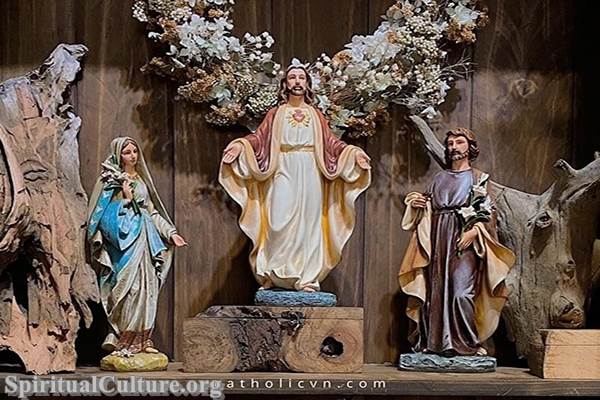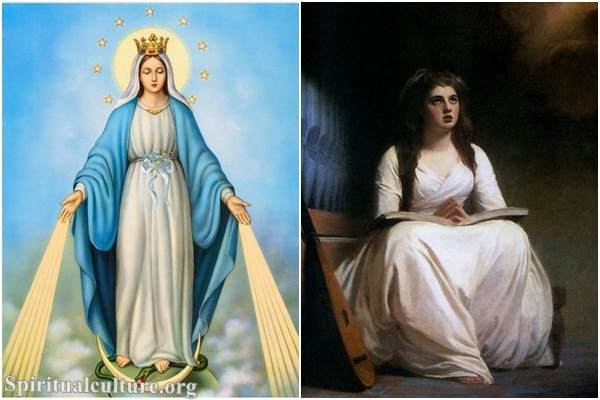Easter is one of the most significant and widely celebrated holidays in the Christian calendar. Revered as the day marking Jesus Christ’s resurrection from the dead, it fulfills biblical prophecies and symbolizes humanity’s hope for eternal life. Steeped in tradition, theology, and centuries of cultural evolution, Easter is both a deeply spiritual event and a vibrant global celebration that transcends borders and customs.
This article dives into the origins, religious significance, and diverse traditions of Easter. By exploring its theological foundation, historical connections, and its place in the modern world, we uncover why Easter remains a cornerstone of Christian faith and a cultural event that brings people together in joy and reflection.
1. What Is Easter?
Easter, also referred to as Pascha in Greek and Latin, is a Christian holiday commemorating the resurrection of Jesus Christ three days after His crucifixion. This miraculous event is considered the culmination of the Passion of Christ—a series of events including His suffering, death, and burial, followed by His triumphant return to life.

More than just a celebration, Easter is the foundation of Christian belief, symbolizing victory over sin and death while offering believers the promise of eternal life. For Christians worldwide, Easter represents the fulfillment of God’s divine plan for humanity’s redemption.
Easter vs. Christmas: Why Is Easter Central to Christian Faith?
While Christmas celebrates the birth of Jesus, Easter underscores the ultimate purpose of His life and ministry: salvation through resurrection. The Apostle Paul, in his letter to the Corinthians, highlights the importance of Easter:
“And if Christ has not been raised, your faith is futile; you are still in your sins” (1 Corinthians 15:17).
Without Easter, the Christian message of hope, redemption, and eternal life would be incomplete. It is no wonder that Easter is often called the “Feast of Feasts” in Christian tradition.
2. The Historical and Religious Significance of Easter
Biblical Origins of Easter
The origins of Easter lie in the New Testament accounts of Jesus’ resurrection. According to the Gospels of Matthew, Mark, Luke, and John, Jesus was crucified on a Friday (Good Friday) and buried in a tomb. On the third day—Sunday—His followers discovered that the tomb was empty. Shortly afterward, Jesus appeared to His disciples and others, affirming His victory over death and the fulfillment of Old Testament prophecies.
This miraculous event is at the heart of Christianity, serving as proof of Jesus’ divine nature and the cornerstone of the faith.
Connection to Passover
Easter’s roots also intertwine with the Jewish festival of Passover, which commemorates the Israelites’ liberation from slavery in Egypt. The Last Supper, observed by Christians on Maundy Thursday, was a Passover meal shared by Jesus and His disciples. This connection between Passover and Easter highlights themes of deliverance and spiritual liberation.
In Christian theology, Jesus is often referred to as the “Lamb of God,” symbolizing the sacrificial lamb of Passover. Through His death and resurrection, Christians believe Jesus provided freedom from the bondage of sin.
Theological Foundations
Easter is central to Christian theology for several reasons:
- Validation of Jesus’ Divinity: The resurrection affirms Jesus as the Son of God, fulfilling centuries of messianic prophecies.
- Victory Over Death: By rising from the dead, Jesus defeated the ultimate consequence of sin, offering believers hope for eternal life.
- A Foundation for Faith: The resurrection serves as the cornerstone of Christian faith, inspiring believers to trust in God’s grace and promises.
The theological weight of Easter is reflected in countless sermons, hymns, and prayers, making it a moment of profound spiritual reflection and joy.
3. When Is Easter Celebrated?
Unlike fixed-date holidays such as Christmas, Easter’s date changes every year. It is celebrated on the first Sunday following the first full moon after the vernal equinox (March 21). This calculation, known as the computus, ensures that Easter aligns with the cycles of the moon and the renewal of spring.
Why Does the Date of Easter Vary?
The varying date of Easter is rooted in ancient debates about how to calculate the holiday. In the early Church, disagreements arose between those who followed the Jewish lunar calendar and those who sought to align Easter with Sunday, the day of Christ’s resurrection. The Council of Nicaea (325 CE) established the formula still used today.
Related Movable Feasts
Easter also determines the dates of several other Christian observances, known as movable feasts:
- Ash Wednesday: Marks the start of Lent, 46 days before Easter.
- Palm Sunday: Commemorates Jesus’ triumphal entry into Jerusalem, one week before Easter.
- Pentecost: Celebrated 50 days after Easter, marking the descent of the Holy Spirit upon the apostles.
These interconnected celebrations create a rich liturgical calendar centered on Easter.
4. Lent and Holy Week: The Journey to Easter
The Easter season is preceded by Lent, a 40-day period of reflection, fasting, and spiritual renewal. Lent mirrors the 40 days Jesus spent fasting in the wilderness and invites believers to prepare their hearts for the resurrection.
4.1. Lent: A Time of Repentance
Lent begins on Ash Wednesday, when Christians receive a cross of ashes on their foreheads as a reminder of human mortality and the need for repentance. During Lent, many believers practice:
- Fasting: Abstaining from certain foods or luxuries as an act of discipline.
- Prayer: Deepening one’s relationship with God through reflection and devotion.
- Charity: Performing acts of kindness and helping those in need.
4.2. Holy Week: The Climax of Lent
The final week of Lent, known as Holy Week, recounts the events leading up to Jesus’ death and resurrection:
- Palm Sunday: Celebrates Jesus’ arrival in Jerusalem, greeted by crowds waving palm branches.
- Maundy Thursday: Marks the Last Supper, where Jesus instituted the Eucharist and washed His disciples’ feet.
- Good Friday: Observes Jesus’ crucifixion and sacrificial death on the cross.
- Holy Saturday: A day of quiet reflection and anticipation before the joyous celebration of Easter Sunday.
5. Easter Traditions Around the World
Easter’s significance has inspired a wide range of traditions, blending religious observance with local customs. These practices reflect the universal themes of renewal and hope while showcasing cultural diversity.
5.1. Church Services
At the heart of Easter celebrations are church services. From solemn Good Friday liturgies to joyous Easter Sunday masses, worshippers gather to reflect on Christ’s sacrifice and resurrection. Special hymns, prayers, and scripture readings create a deeply spiritual atmosphere.
Many communities hold sunrise services, symbolizing the rising of Christ from the tomb and the dawning of new life.
5.2. Easter Eggs: Symbols of Life and Rebirth
The Easter egg is one of the most enduring symbols of Easter. Representing fertility and renewal, eggs have been associated with spring festivals for centuries. Christian tradition adapted this symbolism to represent the resurrection.
Popular egg-related customs include:
- Decorating Eggs: Intricately painted eggs, such as Ukrainian pysanky, are a beloved tradition in Eastern Europe.
- Chocolate Eggs: A modern addition, chocolate eggs delight children and adults alike.
- Easter Egg Hunts: Families hide eggs for children to find, turning Easter into a playful celebration.
5.3. The Easter Bunny
The Easter Bunny, a folkloric figure originating in Germany, has become an icon of Easter in Western cultures. Said to deliver eggs and treats to children, the bunny symbolizes fertility and abundance, tying Easter to themes of renewal and joy.
5.4. Feasting and Festive Foods
Easter feasts bring families and communities together. Traditional dishes vary by region but often include symbolic foods:
- Roast Lamb: Common in Mediterranean cultures, representing Jesus as the Lamb of God.
- Hot Cross Buns: Sweet buns marked with a cross, traditionally eaten in the U.K. on Good Friday.
- Paska Bread: A rich, sweet bread enjoyed in Eastern Europe.
6. Easter Around the Globe
Easter’s universal themes of hope and renewal have inspired unique celebrations worldwide:
6.1. United States
In the U.S., Easter combines religious observance with family-friendly activities such as egg hunts and the White House Easter Egg Roll. Churches hold vibrant services, while families gather for festive meals.
6.2. United Kingdom
British Easter traditions include attending church, enjoying hot cross buns, and participating in Easter parades featuring elaborate hats and costumes.
6.3. Italy
In Italy, Easter, or Pasqua, is marked by religious processions and feasts. A highlight is the Pope’s Urbi et Orbi blessing from St. Peter’s Basilica, watched by millions worldwide.
6.4. Greece
Greek Orthodox Easter is rich with tradition, including midnight liturgies, candlelight processions, and meals featuring red-dyed eggs and lamb. The greeting “Christos Anesti” (Christ is risen) is exchanged joyfully.
6.5. Latin America
Easter in Latin America features dramatic reenactments of the Passion of Christ, known as Pasión Plays, along with vibrant processions and festive meals.
7. Easter in the Modern World
As society evolves, Easter has adapted to modern sensibilities while retaining its spiritual core. Today, it is both a deeply religious event and a cultural celebration that emphasizes hope, renewal, and togetherness.
In secular contexts, Easter has become a time for families to bond and for communities to celebrate spring’s arrival. While commercialization has introduced chocolate eggs and greeting cards, the holiday’s spiritual message remains at its heart.
Conclusion
Easter is a celebration of life, renewal, and the enduring power of hope. From its biblical origins to its modern-day traditions, it continues to inspire believers and bring people together in joy and reflection. Whether observed through solemn worship, festive feasts, or playful egg hunts, Easter reminds us of the triumph of light over darkness and the promise of a brighter future.
By embracing its spiritual and cultural significance, we honor Easter as a timeless expression of faith, love, and renewal.


